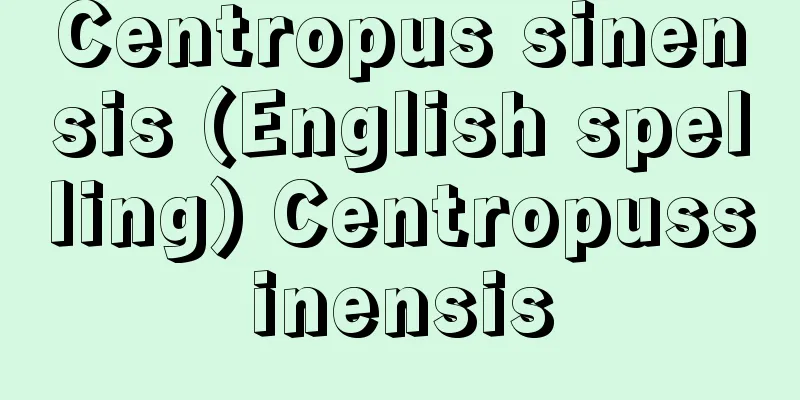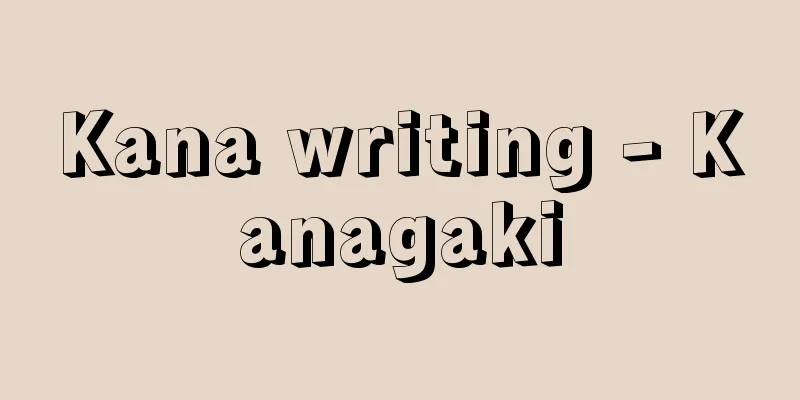Reconstruction Finance Bank

|
A government financial institution fully funded by the government, established in January 1947 under the Reconstruction Finance Bank Act (Act No. 34 of 1946) in order to provide long-term industrial financing that was difficult for general financial institutions to provide, with the aim of reviving the Japanese economy after the Second World War. It was abbreviated as Fukkin. Following the priority production method, it provided huge loans intensively to key industries such as coal, steel, electricity, and chemical fertilizer, and contributed greatly to the recovery of productivity. However, on the other hand, the procurement of funds was covered by issuing financial bonds (Reconstruction Finance Bank bonds) and underwriting them by the Bank of Japan (about 64%), which caused an increase in the issuance of Bank of Japan notes and led to inflation. This is called the Fukkin inflation. At that time, private financial institutions had not been rebuilt, and Fukkin became the center of capital accumulation, and as a result, Fukkin alone undertook 98% of the total capital financing for coal, 73% for steel, 64% for chemical fertilizer, and 93% for electricity. On the other hand, the Bank of Japan's repatriation balance accounted for 33% of the Bank of Japan's note issuance, becoming a major factor in the expansion of the currency. In 1949, the Bank of Japan suspended new lending due to the Dodge Line, and in January 1952, it was dissolved, transferring its claims and liabilities to the Japan Development Bank (now the Development Bank of Japan). [Hara Shiro] "Retrospective of the Reconstruction Loans" (1950), edited by the Reconstruction Finance Bank ; "Financial History of the Showa Period: From the End of the War to the Peace Treaty, Volume 12, Finance (1)" (1976, Toyo Keizai Inc.) [References] |Source: Shogakukan Encyclopedia Nipponica About Encyclopedia Nipponica Information | Legend |
|
第二次世界大戦後の日本経済復興を目的として、一般金融機関で融資困難な長期の産業資金を供給するため、1946年(昭和21)の復興金融金庫法(昭和21年法律第34号)に基づいて1947年1月に設立された全額政府出資の政府金融機関。復金と略称される。傾斜生産方式に従って、石炭、鉄鋼、電力、化学肥料など基幹産業に集中的に巨額の融資を行い、生産力の回復に大きく寄与した。しかし他方において、その資金の調達を金融債(復興金融金庫債)の発行およびその日本銀行引受け(約64%)でまかなったために、日銀券の増発を引き起こし、インフレーションを招いた。これが復金インフレとよばれるものである。当時は民間金融機関が再建されていないこともあり、復金が資本蓄積の中心にたつこととなり、このため、石炭の設備資金で全体の98%、鉄鋼の設備資金で73%、化学肥料の設備資金で64%、電力の設備資金で93%を復金だけで引き受けることとなった。反面、日銀保有の復金残高は日銀券発行高の33%を占めるに至り、通貨膨張の一大要因となったのである。1949年のドッジ・ラインにより新規貸出を停止し、1952年1月に債権・債務を日本開発銀行(現、日本政策投資銀行)に引き継いで解散した。 [原 司郎] 『復興金融金庫編・刊『復金融資の回顧』(1950)』▽『大蔵省財政史室編『昭和財政史――終戦から講和まで12 金融(1)』(1976・東洋経済新報社)』 [参照項目] |出典 小学館 日本大百科全書(ニッポニカ)日本大百科全書(ニッポニカ)について 情報 | 凡例 |
<<: Fo Guang Shan (English name)
>>: The spirit of the reconstruction period
Recommend
Nepali (English spelling)
…This multi-layered nature is also seen in the ur...
Aijakurihagi - Aijakurihagi
...Jointing is a method of joining boards togethe...
Occupation - occupatio (Latin)
In legal terms, there is Roman law, international...
Q-BOP
…K. Brötzmann of West Germany, who was searching ...
Dumetella carolinensis (English spelling) Dumetella carolinensis
…For example, it has been reported that even mock...
Humidifier fever - Kashitsuki fever
…Prevention can be achieved by constantly keeping...
Seita Kumura - Seita Kumura
Businessman. Born in Sakata, Yamagata Prefecture....
Air Conditioning - Kuchou
Adjusting the indoor environment, including temper...
Deák Ferencz
Born: October 17, 1803. Sheitel Died January 28/29...
Hymn of Love - Ainosanka (English) Hymne à l'amour
A famous chanson song. The lyrics were written by...
Punishment
It refers to the legal sanctions imposed on those...
Thakin party - Takhinto (English spelling)
Another name for Do Bamar As Yi Ayoung (We the Bu...
Ibn Riḍwān (English spelling)
...If the remaining half is filled with mercury u...
Apothecary
... In Japan, where the separation of medical and...
Soleidae
…General term for fishes belonging to the suborde...









